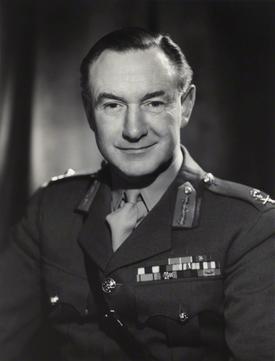
The Lancashire Fusiliers was a line infantry regiment of the British Army that saw distinguished service through many years and wars, including the Second Boer War, and the First and Second World Wars. It had many different titles throughout its 280 years of existence.

The Major-General commanding the Household Division commands the Household Division of the British Army and is also the General Officer Commanding London District. In British Army parlance, "The Major-General" always refers to the Major-General commanding the Household Division. The Major-General has sole responsibility for the Service aspect of all State and ceremonial occasions within London District. The office holds executive command of the Household Division and of any other units brought into London for providing military security to the Sovereign, the Royal Palaces as well as for ceremonial purposes and is the main channel of communication between the Household Division and the Monarch. He or she is appointed by The Sovereign, and will previously have commanded a Regiment or Battalion within the Household Division.

General Sir Anthony Heritage Farrar-Hockley, nicknamed Farrar the Para, was a British Army officer and a military historian who fought in a number of British conflicts. He held a number of senior commands, ending his career as Commander-in-Chief of NATO's Allied Forces Northern Europe. Throughout his four decades of army life, he spoke plainly, and both before and after his retirement in 1982 wrote on the conflicts he had experienced and the Second World War.

General Sir Gerald William Lathbury, was a senior British Army officer who fought during the Second World War, serving with distinction with the British Army's airborne forces, commanding the 1st Parachute Brigade in Sicily, Italy and Holland. He later became Governor of Gibraltar from 1965 to 1969.

General Sir William Platt was a senior officer of the British Army during both the First and the Second World Wars.
General Sir James Newton Rodney Moore,, usually known as Sir Rodney Moore, was a senior British Army officer. He fought in the Second World War and Palestine Emergency, and was General Officer Commanding London District from 1957 to 1959. Moore was appointed the inaugural Chief of Malaysian Armed Forces Staff from 1959 to 1965, a post he occupied during the final stages of the Malayan Emergency and early period of the Indonesia–Malaysia confrontation. His final posting was as Defence Services Secretary from 1964 to 1966.

Lieutenant General Sir Hew William Royston Pike is a retired senior British Army officer known for his service in the Falklands War and for his command in Northern Ireland.

General Sir Mervyn Andrew Haldane Butler, was a British Army officer who served as Commander-in-Chief Strategic Command.

General Sir Kenneth Thomas Darling was a senior British Army officer who after serving with distinction during the Second World War was Commander-in-Chief (C-in-C) of Allied Forces Northern Europe 1967–69.
Lieutenant General Sir Roderick William McLeod, was a British Army officer who achieved high office in the 1950s.
General Sir Michael Montgomerie Alston-Roberts-West,, better known as Sir Michael M.A.R. West, was a senior British Army officer who achieved high office in the 1960s. He served in the Second World War and the Korean War, where he commanded the 1st Commonwealth Division and later became General Officer Commanding-in-Chief (GOC-in-C) for Northern Command. West was a witty and unconventional soldier, with a taste for partying and jazz.
General Sir Thomas Cecil Hook Pearson, was a senior officer of the British Army who served as Commander-in-Chief of Allied Forces Northern Europe from 1972 to 1974. At the time of his death, he was the oldest living British full general.
The Coronation Honours 1911 for the British Empire were announced on 19 June 1911, to celebrate the Coronation of George V which was held on 22 June 1911.

Lieutenant General Sir John Gordon Lorimer, is a retired senior British Army officer, who served as the Chief of Joint Operations and the Defence Senior Adviser to the Middle East and North Africa. He was appointed Lieutenant Governor of the Isle of Man on 29 September 2021.
Lieutenant General Sir Edward Thomas Humphreys, was a British Army officer who commanded the 5th Division from 1931 to 1934.

General Sir Eric de Burgh, was a British Indian Army officer who served as Chief of the General Staff in India from 1939 to 1941.

General Sir Patrick Nicholas Yardley Monrad Sanders, is a senior British Army officer who served as Chief of the General Staff from 13 June 2022 until 15 June 2024.
The 1928 Birthday Honours were appointments by King George V to various orders and honours to reward and highlight good works by citizens of the British Empire. The appointments were made to celebrate the official birthday of The King, and were published in The London Gazette on 4 June 1928.

Lieutenant General Sir Nicholas Robert Macrae Borton,, is a retired British Army officer, who served as commander of NATO's Allied Rapid Reaction Corps from 2021 to 2024.
Lieutenant-General Sir Arthur Edward McNamara (1877–1949) was a British Army officer.













